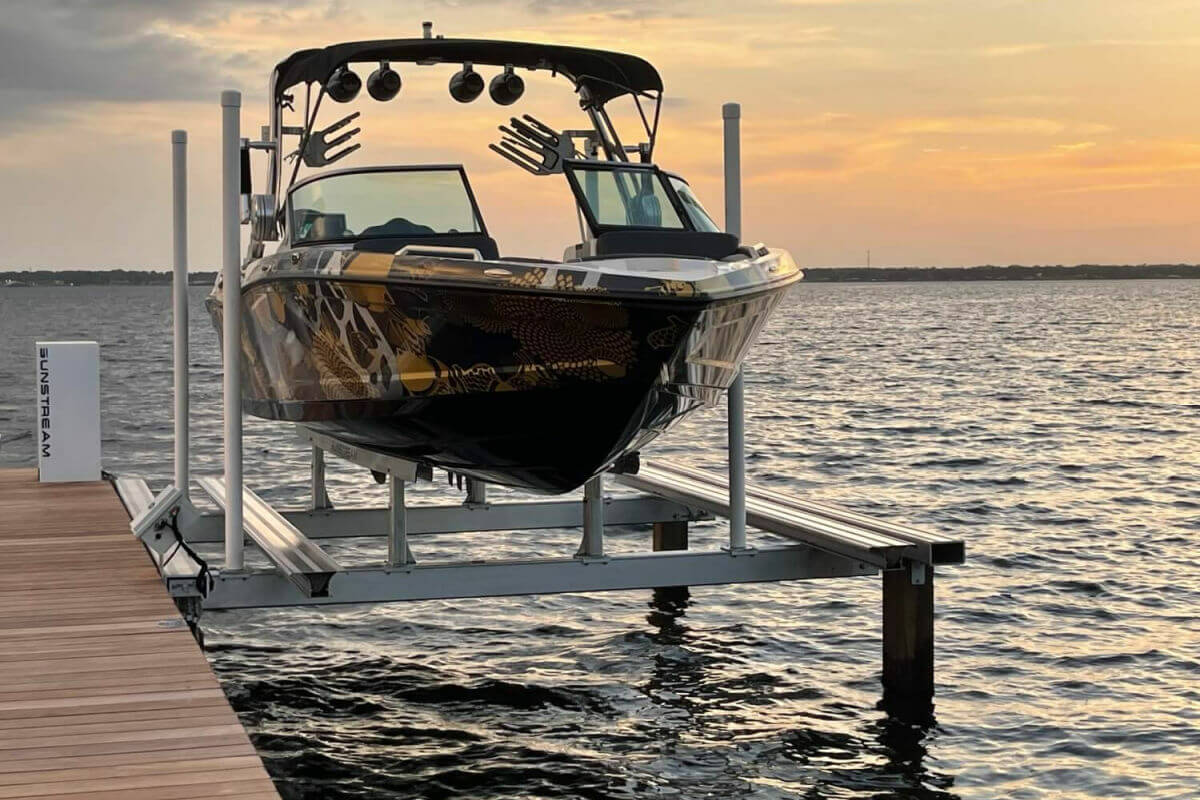Owning a boat brings about lots of freedom and adventure, but it also comes with upkeep. One decision that you will need to make is choosing the right boat lift for you. The differences between a hydraulic boat lift and a cable-drawn boat lift may impact your decision. Weighing all of your options typically helps to determine if a hydraulic boat lift or a cable boat lift is the right choice for your unique situation.
Hydraulic or Cable – Which Is Best?
Hydraulic boat lifts stand out for their smooth operation. Hydraulic boat lifts also have fewer moving parts than cable lifts, which makes them quieter and potentially more dependable. If you prioritize convenience and durability, hydraulic boat lifts are an excellent choice. On the other hand, cable boat lifts are more budget-friendly since they use a cable and pulley system to lift the boat.
Cable boat lifts typically need more frequent upkeep to prevent wear and snapping due to all of the moving parts and may work extremely well for smaller boats. You will also need to decide between a cantilever boat lift vs. a vertical boat lift design. Vertical lifts are available for both hydraulic and cable systems, as they provide higher elevation, which makes them ideal for lakes with changing water levels. Cantilever lifts are simpler, but commonly offer less height adjustment.
Installation & Repair
Having a hydraulic boat lift installed is usually more of a straightforward process. Most hydraulic lifts require minimal adjustments to be made. Hydraulic boat lifting systems have fewer repair needs, due to the streamlined design. Although hydraulic boat lifts may come with a higher upfront price, the long-term maintenance is often much easier. If you’re wondering how much a hydraulic boat lift costs, it varies, but often runs higher than cable lifts, depending on the model and boat size.
Cable boat lifts can involve more steps during installation, as well. A cable boat lift often requires adjustments to secure the cable and pulley system. More frequent repair needs may arise due to wear on the cables, especially in saltwater environments where rust is more likely. This may mean additional expenses for parts and maintenance, which can add up overtime. Many cable lift owners find that they need to replace or repair cables after a few years.
Maintenance
Hydraulic boat lifts generally require minimal maintenance. For example, maintenance often involves occasional checks on hydraulic fluid levels and lubrication of primary parts. Hydraulic boat lifts are often appealing to boaters who want simplicity. Since hydraulic boat lifting systems are less prone to wear, they make sense for owners who are not frequently at the dock.
Cable boat lifts require a more hands-on approach to maintenance. Boat lift cable maintenance involves inspecting cables for signs of fraying, stretching, or rust. Saltwater or high-humidity environments may create more wear on the cables, so regular inspections and occasional cable replacement may be needed. Proper maintenance is critical to avoid cable snapping, which can be both costly and dangerous.
Helix Boat Lifts – Fast Hydraulics
Helix boat lifts have gained popularity in the hydraulic boat lift market for their reliable and quick operation. Helix lifts use a high-powered hydraulic system that allows fast and smooth boat lifting and lowering. The Helix design prioritizes durability, which appeals to boaters who want performance with less maintenance. Many see Helix as one of the best hydraulic boat lift brands due to its focus on quality construction and dependable operation.
Closing Thoughts About Hydraulic vs Cable Boat Lift
Choosing between a hydraulic boat lift and a cable boat lift usually depends on several factors. Hydraulic boat lifts often cost more initially, yet they offer a low-maintenance solution that’s great for frequent boaters. On the other hand, cable boat lifts provide a more affordable alternative but may involve more ongoing maintenance. Understanding all of these differences can help you select the right lift to protect your boat and enjoy more time on the water.
